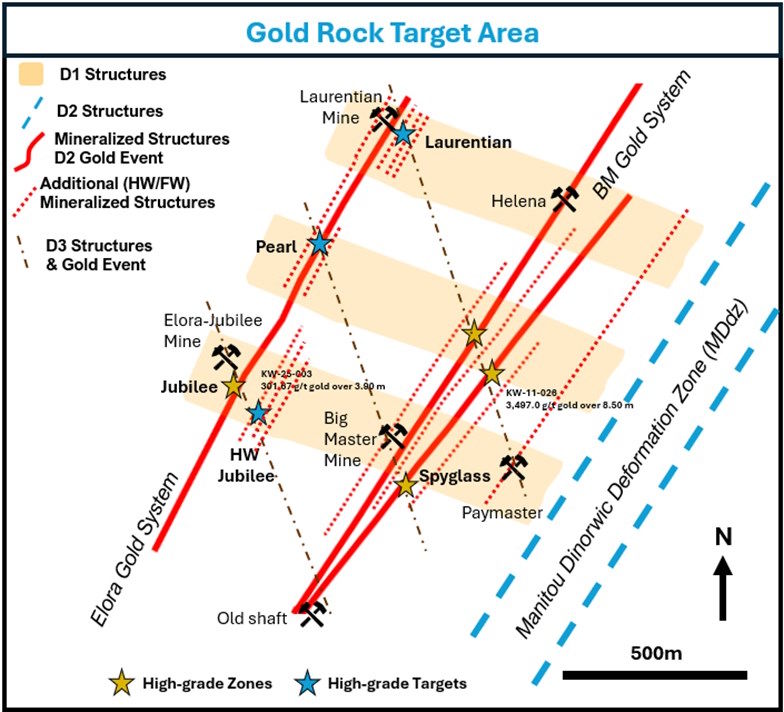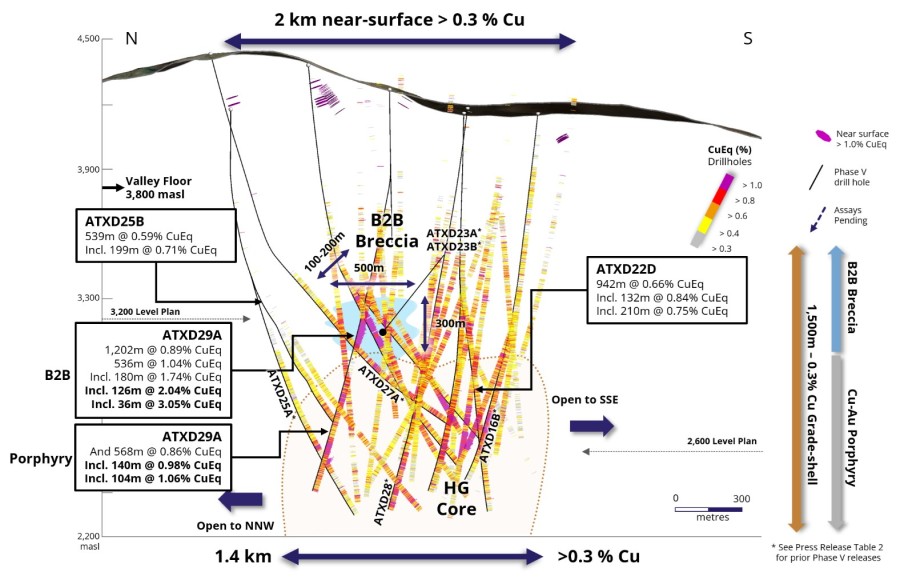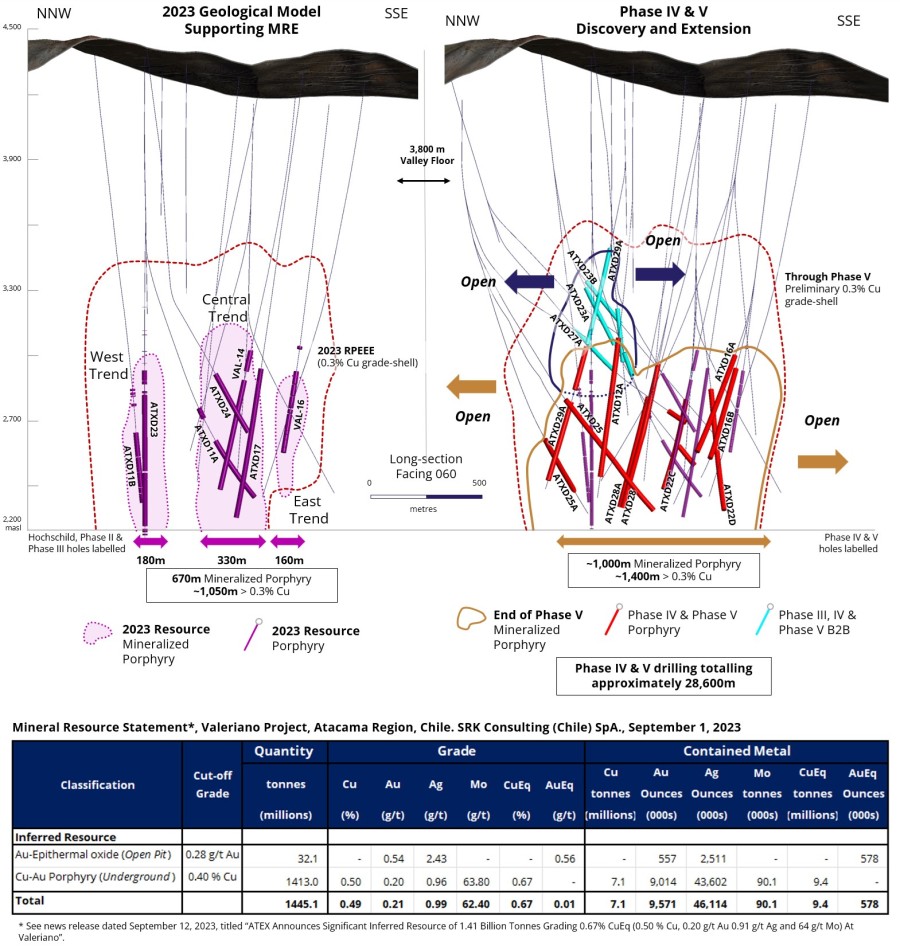VANCOUVER, BRITISH COLUMBIA--(Marketwired - March 6, 2017) - Search Minerals Inc. (TSX VENTURE:SMY) ("Search" or the "Company") is pleased to announce the initial results from its pilot plant operation at SGS Laboratories in Lakefield, Ontario. The pilot plant project has been completed with some further results to be subsequently released.
After processing over 3.0 tonnes of material representative of the Foxtrot Deposit, the pilot plant testing has clearly demonstrated the ability to produce a high purity mixed rare earth oxide (REO) concentrate. In addition, the pilot plant testing has successfully demonstrated the ability to bring uranium, thorium, zinc, and iron levels below those thresholds expected by refineries that separate mixed REO concentrates into individual rare earth elements (REEs).
Pilot Plant Highlights:
- Processed over 3.0 tonnes of crushed material from the Foxtrot Deposit using the patented Search Minerals Direct Extraction Process.
- Achieved excellent metallurgical results including:
- Average extractions of 85% neodymium (Nd), 86% praseodymium (Pr), 68% dysprosium (Dy) by acid treatment/water leaching.
- Average Losses of 2% Nd, 2% Pr and 0.3% Dy through iron removal.
- Separation of uranium from the rare earths by ion exchange to below detection limits in solution.
- Precipitation of +99.9% of the rare earth elements as a mixed carbonate product containing ~35% total rare earth content. (Average of 5.3% Nd, 1.48% Pr, 0.58% Dy).
- Demonstration of the re-leaching and purification of the mixed carbonate product to produce REO material for refining with low Th (8.6 g/t), U (<0.5 g/t) and Zn (64 g/t).
- The refining of the mixed rare earth carbonate product was performed in a sulfuric acid medium with careful control of thorium (precipitation with magnesium carbonate) and zinc (precipitation with hydrogen sulfide).
- The final product was formed by oxalic acid precipitation and calcination.
- Generated engineering data for all parts of the circuit from sample preparation to production of the mixed rare earth oxide.
- Produced environmental samples (leach residues, precipitates, and barren solutions) for characterization.
Greg Andrews, President and Chief Executive Officer of Search, states, "The results from the pilot plant testing conducted at SGS Laboratories in Lakefield, Ontario under the supervision of Search Vice-President of Metallurgy, Dr. David Dreisinger have exceeded expectations. The results help support a conclusion that our proprietary 'Direct Extraction' metallurgical process can produce a high purity mixed rare earth oxide. Furthermore, based on close attention to market forecasts, the process has been optimized to significantly increase recoveries for our key revenue elements, neodymium (Nd) and praseodymium (Pr)."
"We cannot overstate the importance of this achievement," noted Jim Clucas, Executive Chairman of Search. "Getting the metallurgy provides greater confidence and is a major milestone in the advancement of any REE project. It not only takes significant financial resources but significant management attention. On behalf of the Board and Management of Search Minerals I would like to thank the NunatuKavut Community Council and all our shareholders for their ongoing support over the last two years. As well, we'd like to thank the Atlantic Canada Opportunities Agency ("ACOA") and the Research & Development Corporation of Newfoundland and Labrador ("RDC") for their contribution of $1.25M towards this $ 1.9M pilot plant project," Clucas added.
Further Description of Process and Results
The Search Minerals Direct Extraction Process was tested on a sample of Foxtrot mineralization at SGS Minerals Lakefield Site. A representative bulk sample of Foxtrot mineralization was prepared under the supervision of Dr. Randy Miller of Search Minerals for the testing. The material was crushed to -10 mesh particle size prior to chemical treatment.
The testing process included: (1) extensive bench scale testing of the new sample and optimization of the chemical conditions for rare earth element recovery from the Foxtrot material, (2) a 5-day commissioning campaign in December 2016 to ensure smooth pilot operation, (3) a 10-day production campaign in January 2017 from crushed sample to mixed rare earth carbonate and (4) a 4-day refinery campaign to process mixed rare earth carbonate precipitate to mixed rare earth oxide.
Primary Leach Circuit
The first part of the pilot plant (to production of mixed rare earth carbonate) included these steps:
- Acid/sample mixing in a "PUG" mill.
- Acid/sample heating in the METSO HOLOFLITE system.
- Holding acid/sample mixture at temperature in a holding furnace (equivalent to the insulated discharge hopper in the plant).
- Water leaching of the acid/sample mixture to dissolve rare earth elements.
- Iron removal (along with aluminum and thorium) by pH adjustment with magnesium carbonate addition.
- Filtration and washing to recover a leach/purification residue and a clean solution carrying rare earth elements.
- Removal of uranium by ion exchange.
- Precipitation of rare earth elements as a mixed carbonate by addition of sodium carbonate.
- Thickening and filtration/washing of the mixed rare earth carbonate. The mixed rare earth carbonate is held as a wet filter cake ready for the re-leach circuit of the pilot plant, which was operated as a separate campaign.
The key results of the Primary Leach Circuit of the pilot plant were as follows:
1. Acid bake and water leach extractions with approximately 140 kg of sulfuric acid addition per tonne of ore.
The acid baking and water leach extractions were reported for the period January 21, 2017 to January 27, 2017 as follows. The average extractions of the critical elements were 85% for Nd, 86% for Pr and 68% for Dy with several operating periods exceeding 70% Dy.
| Extraction (%) | ||||||||||||||||||||||||||||||||||||
| La | Ce | Pr | Nd | Sm | Eu | Gd | Tb | Dy | Ho | Y | Er | Tm | Yb | Lu | Sc | Th | U | |||||||||||||||||||
| January 21 AM | 88 | 87 | 87 | 87 | 83 | 77 | 78 | 75 | 73 | 70 | 71 | 67 | 65 | 59 | 55 | 13 | 71 | 55 | ||||||||||||||||||
| January 21 PM | 89 | 89 | 90 | 89 | 85 | 81 | 80 | 74 | 72 | 70 | 71 | 67 | 65 | 60 | 55 | 15 | 70 | 56 | ||||||||||||||||||
| January 22 AM | 87 | 87 | 87 | 86 | 83 | 83 | 78 | 73 | 70 | 68 | 69 | 64 | 61 | 58 | 54 | 14 | 64 | 51 | ||||||||||||||||||
| January 22 PM | 83 | 84 | 94 | 83 | 80 | 80 | 75 | 71 | 70 | 67 | 68 | 65 | 63 | 58 | 53 | 15 | 70 | 51 | ||||||||||||||||||
| January 23 AM | 84 | 84 | 94 | 84 | 80 | 79 | 74 | 72 | 69 | 67 | 68 | 65 | 63 | 60 | 56 | 17 | 76 | 51 | ||||||||||||||||||
| January 23 PM | 82 | 83 | 92 | 82 | 81 | 81 | 75 | 70 | 66 | 68 | 65 | 61 | 63 | 57 | 62 | 20 | 77 | 52 | ||||||||||||||||||
| January 24 AM | 84 | 86 | 95 | 84 | 80 | 79 | 73 | 70 | 65 | 68 | 67 | 59 | 61 | 55 | 51 | NA | 77 | 49 | ||||||||||||||||||
| January 24 PM | 87 | 88 | 97 | 87 | 83 | 72 | 75 | 73 | 70 | 65 | 67 | 65 | 63 | 56 | 47 | 19 | 82 | 53 | ||||||||||||||||||
| January 25 AM | 85 | 85 | 85 | 84 | 81 | 80 | 73 | 68 | 63 | 65 | 66 | 63 | 61 | 53 | 41 | 14 | 79 | 47 | ||||||||||||||||||
| January 25 PM | 87 | 87 | 87 | 86 | 82 | 77 | 75 | 69 | 65 | 62 | 67 | 62 | 60 | 55 | 46 | 13 | 76 | 53 | ||||||||||||||||||
| January 26 AM | 87 | 87 | 86 | 85 | 80 | 78 | 75 | 71 | 67 | 63 | 68 | 64 | 62 | 59 | 46 | 11 | 77 | 52 | ||||||||||||||||||
| January 26 PM | 85 | 85 | 85 | 84 | 80 | 74 | 75 | 71 | 68 | 66 | 68 | 64 | 62 | 58 | 51 | 15 | 77 | 49 | ||||||||||||||||||
| January 27 AM | 87 | 87 | 87 | 86 | 84 | 75 | 77 | 71 | 71 | 65 | 69 | 66 | 63 | 57 | 53 | 18 | 79 | 56 | ||||||||||||||||||
| Average | 86 | 86 | 86 | 85 | 82 | 78 | 75 | 71 | 68 | 67 | 68 | 64 | 62 | 57 | 51 | 11 | 75 | 52 | ||||||||||||||||||
2. Iron Removal
The iron removal process is designed to remove the bulk of the iron, aluminum and thorium from solution by precipitation with magnesium carbonate while minimizing the losses of rare earths to the iron residue. The average removal efficiency of impurities was 100% for Fe, 56% for Al and 92% for Th. The losses of rare earths by co-precipitation were minimal. The overall recoveries of the rare earth elements to solution are summarized below. The average recoveries were Nd (83%), Pr (84%) and Dy (68%). When compared to the acid bake and water leach extractions, the losses were 2-3% for Nd-Pr and <1% for Dy.
| Recoveries to Solution after Iron Removal (%) | ||||||||||||||||||||||||||||||
| La | Ce | Pr | Nd | Sm | Eu | Gd | Tb | Dy | Ho | Y | Er | Tm | Yb | Lu | ||||||||||||||||
| Average | 84 | 84 | 84 | 83 | 80 | 76 | 75 | 70 | 68 | 65 | 68 | 64 | 60 | 56 | 49 | |||||||||||||||
3. Uranium Ion Exchange
The uranium ion exchange process selectively removes uranium from the iron free solution to ensure production of a low uranium mixed rare earth oxide product. The uranium was removed to below the detection limit in the solution with negligible (<0.1%) loss of rare earth elements by co-loading with uranium.
4. Precipitation of a Mixed Rare Earth Carbonate Precipitate
The uranium and iron free solution was treated with sodium carbonate solution to precipitate the rare earths (and any remaining impurities) as a mixed carbonate product. This process was highly efficient and produced a mixed carbonate product of the analysis shown below. The first table shows the rare earth composition of the precipitate. The second table shows the remaining contaminants in the precipitate that must be removed in the refining process (the second part of the Search Minerals Direct Extraction Process).
| Average Analysis of the Rare Earth Carbonate Precipitate (%) | ||||||||||||||||||||||||||||||
| La | Ce | Pr | Nd | Sm | Eu | Gd | Tb | Dy | Ho | Y | Er | Tm | Yb | Lu | ||||||||||||||||
| Average | 5.83 | 12.54 | 1.48 | 5.32 | 0.93 | 0.05 | 0.7 | 0.1 | 0.58 | 0.11 | 2.85 | 0.3 | 0.04 | 0.23 | 0.03 | |||||||||||||||
| Average Impurity Analysis of the Rare Earth Carbonate Precipitate | ||||||||||||||||||||||
| Th | U | Si | Al | Fe | Mg | Ca | Mn | Cr | Be | Zn | ||||||||||||
| (g/t) | (g/t) | (%) | (%) | (%) | (%) | (%) | (%) | (%) | (%) | (%) | ||||||||||||
| Average | 199 | 1 | 5.49 | 5.89 | 0.34 | 0.48 | 1.08 | 0.35 | 0.03 | 0.12 | 3.1 | |||||||||||
5. Re-Leach and Refining
The second part of the pilot plant program processed the mixed rare earth carbonate product to form a mixed rare earth oxide.
The steps in this process were:
1. Re-leach the mixed carbonate in a weak sulfuric acid solution (change from former practice of using hydrochloric acid).
2. Adjust the pH of the solution to remove Fe, Al, Th to low levels.
3. Filter the solid residue produced by the pH adjustment. Note that some REEs are precipitated in this process but we have shown on the bench that we can treat this residue with strong acid and recycle to the first part of the plant (current operation) with negligible losses of REE's.
4. Removal of zinc by sulfide precipitation to produce a 63% Zn stream.
5. Precipitation of REE's by oxalic acid addition to form insoluble RE oxalates.
6. Filtration and washing of RE Oxalates.
7. Calcine the RE Oxalates to produce the ~99% pure produce with low impurity content for refining.
The re-leaching and pH adjustment process was effective at redissolving the rare earth elements from the mixed carbonate and precipitating the iron, aluminum and thorium to low levels using magnesium carbonate. This process was done with sulfuric acid addition in order to remove the use of hydrochloric acid from the Search Minerals Direct Extraction Process.
The precipitate recovered from this part of the process still carries high rare earth values which must be recovered and recycled to the first part of the Search process for recovery. The initial testing of the re-leaching of this precipitate has shown that high extractions (and therefore negligible losses) of rare earth elements can be obtained. Further bench scale work on this precipitate treatment is being performed by SGS Minerals to confirm the high extractions and negligible losses.
The removal of zinc from solution by hydrogen sulfide precipitation was very effective to producing a low zinc solution composition for the oxalic acid precipitation step.
The initial recovery of a mixed rare earth oxide by oxalic acid precipitation and calcination has confirmed the production of a high grade mixed rare earth oxide product containing low Th (8.6 g/t), U (<0.5 g/t) and Zn (64 g/t) for refining to individual rare earth elements.
Qualified Person:
Dr. David Dreisinger, Ph.D., P.Eng., is the Company's Vice President, Metallurgy and Qualified Person for the purposes of NI 43-101. Dr. Dreisinger has reviewed and approved the technical disclosure contained in this news release as applicable. The company will endeavour to meet high standards of integrity, transparency, and consistency in reporting technical content, including geological and assay (e.g., REE) data.
About Search Minerals Inc.
Led by a proven management team and board of directors, Search is focused on finding and developing resources within the emerging Port Hope Simpson Critical Rare Earth Element (CREE) District of SE Labrador. The Company controls a belt 70 km long and 8 km wide including its 100% interest in the FOXTROT Project which is road accessible and at tidewater. Exploration efforts have advanced "Deepwater Fox" and "Fox Meadow" as significant new CREE prospects very similar and in close proximity to the original FOXTROT discovery. While the Company has identified more than 20 other prospects in the District, its primary objective remains development of FOXTROT by confirming proprietary processing technology at the pilot plant level (in progress) and delineation of prospects that will ensure competitive-low cost production beyond the 14-year mine life contemplated in the Preliminary Economic Assessment of FOXTROT completed in April 2016. The FOXTROT Project has a low capital cost to bring the initial project into production ($152 M), a short payback period and is scalable due to Search's proprietary processing technology.
All material information on the Company may be found on its website at www.searchminerals.ca and on SEDAR at www.sedar.com





